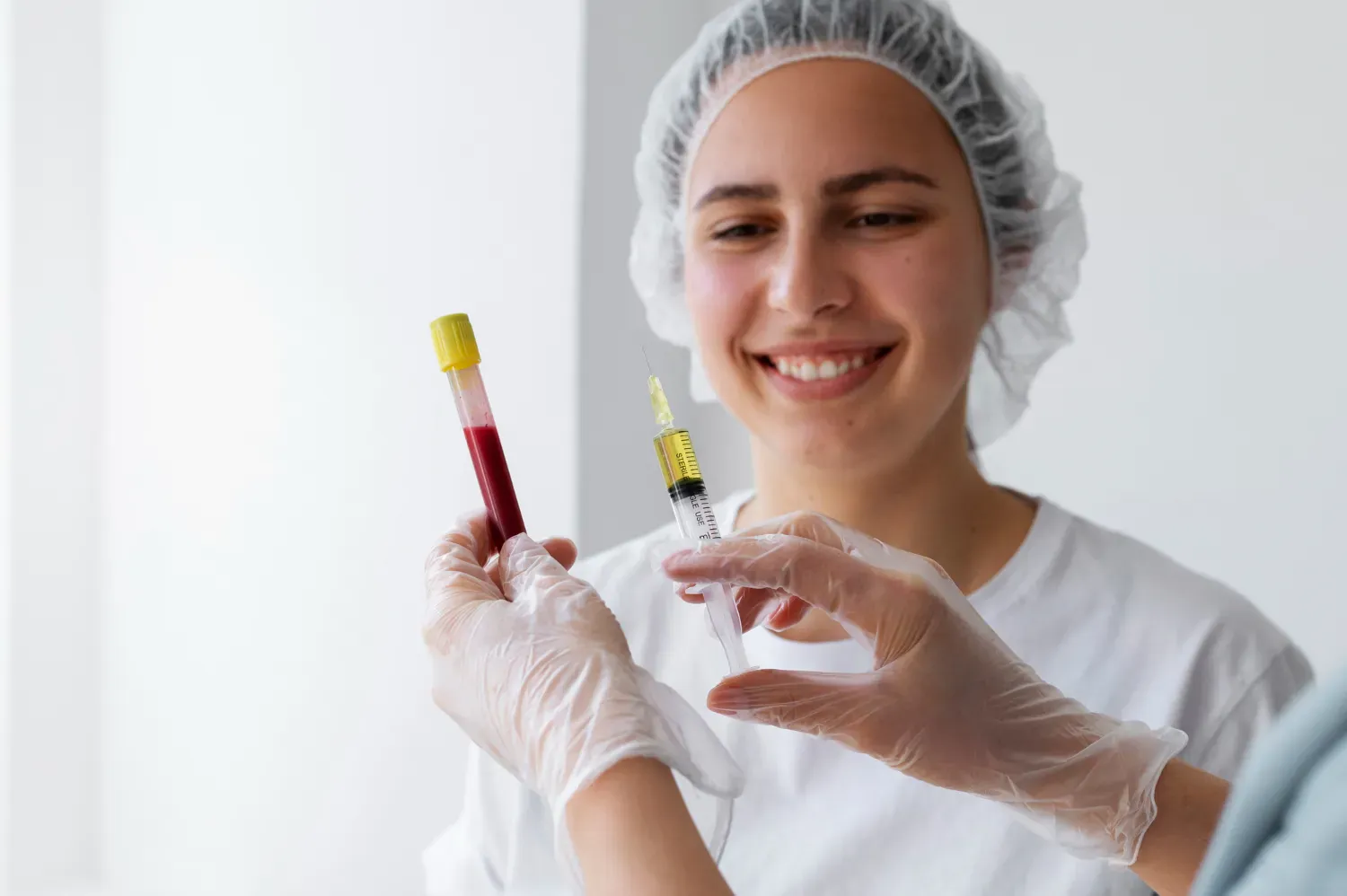
PRP Therapy Overview
Harness Your Body's Natural Healing Power with Platelet-Rich Plasma
Duration
Approx. 60 Mins
Sessions
Variable
Price From
£275
Downtime
Minimal
Key Benefits
- Utilizes your body's own growth factors
- Natural and autologous treatment
- Minimally invasive procedure
- Low risk of allergic reactions
- Versatile for hair, beard, skin & joints
- Stimulates natural tissue repair
Common Target Areas
Unlock Your Natural Regenerative Potential
Platelet-Rich Plasma (PRP) Therapy is a revolutionary treatment that utilizes the healing components found within your own blood to stimulate natural repair and regeneration. At PRP London Clinic, Dr. Hans expertly prepares and administers PRP to address concerns ranging from hair loss and skin ageing to beard enhancement and joint discomfort.
This page provides a general overview of PRP therapy. Explore our dedicated pages to learn how PRP specifically benefits Hair Loss, Beard Growth, Skin Rejuvenation (PRP Facial), and Joint Health.
What is Platelet-Rich Plasma (PRP)?
Blood is composed of several components, including red blood cells, white blood cells, plasma, and platelets. Platelets are crucial for blood clotting, but they also contain hundreds of proteins called growth factors, which are vital for healing injuries and tissue regeneration.
PRP Therapy involves drawing a small sample of your blood, processing it in a centrifuge to separate the components, and concentrating the platelets within the plasma. This resulting Platelet-Rich Plasma contains a significantly higher concentration of growth factors than normal blood – typically 5 to 10 times greater.
The Science Behind PRP Therapy
When PRP is injected into a target area (such as the scalp, beard area, skin, or a joint), the concentrated growth factors are released. These powerful biological signals stimulate the body's natural healing cascade:
- Cell Growth & Proliferation: Growth factors encourage the multiplication of local cells, like hair follicle cells or skin fibroblasts.
- Tissue Regeneration: They promote the formation of new tissue, including collagen and elastin in the skin or cartilage repair elements in joints.
- New Blood Vessel Formation (Angiogenesis): Improved blood supply brings more nutrients and oxygen to the treated area.
- Inflammation Control: PRP can help modulate inflammation, reducing pain and promoting a healthier environment for healing.
Essentially, PRP enhances and accelerates the body's inherent ability to repair and rejuvenate itself using its own resources.
Key Applications of PRP Therapy
PRP's regenerative capabilities make it a versatile treatment offered by Dr. Hans for various conditions:
PRP for Hair Loss
Stimulates scalp follicles to reduce shedding and promote thicker, denser hair growth.
PRP for Beard Growth
Enhances density and fullness in the beard area by stimulating dormant hair follicles.
PRP Facial (Skin Rejuvenation)
Combined with microneedling, PRP improves skin texture, tone, fine lines, and overall radiance by boosting collagen.
PRP for Joints & Tendons
Injected into joints (like knees, shoulders) or tendons to reduce pain, improve function, and support tissue repair for conditions like arthritis or tendonitis.
The General PRP Procedure
While specifics vary by application, the core PRP process is consistent:
- Consultation: Discussion with Dr. Hans to assess your needs and confirm PRP suitability.
- Blood Draw: A small amount of blood is drawn from your arm, similar to a routine blood test.
- Centrifugation: The blood sample is placed in a specialized centrifuge machine that spins at high speed to separate the platelets and plasma from other blood cells.
- PRP Extraction: Dr. Hans carefully extracts the concentrated platelet-rich plasma layer.
- Injection: The prepared PRP is injected into the targeted treatment area (scalp, beard, skin, or joint). Topical anaesthetic or local anaesthetic may be used for comfort.
The entire process usually takes around 60 minutes.
Is PRP Therapy Safe?
PRP therapy is considered very safe because it uses your body's own biological material (autologous treatment). This significantly minimizes the risk of allergic reactions or disease transmission. As with any injection, there is a small risk of temporary side effects like pain, swelling, bruising, or redness at the injection site. These are typically mild and resolve quickly. The procedure is performed under sterile conditions by Dr. Hans to ensure safety.
Expert PRP Therapy in London
PRP London Clinic offers expert PRP treatments administered by the highly experienced Dr. Hans. Contact us to learn more about how PRP can benefit you.
Consult with Dr. Hans About PRP
Discover the power of your body's own healing factors. Book a consultation with Dr. Hans at PRP London Clinic today to discuss if PRP Therapy is the right choice for your hair, beard, skin, or joint concerns.
Myths vs Facts
PRP therapy involves injecting someone else's blood.
False. PRP uses only your own blood, which is drawn and processed immediately before your treatment.
PRP results are permanent after one session.
Results develop over time and often require a series of treatments (typically 3). Maintenance sessions are usually needed to sustain the benefits as natural processes continue.
PRP Therapy is extremely painful.
Discomfort is generally minimal and managed with topical or local anaesthetics. Most patients tolerate the injections well.
PRP is the same as stem cell therapy.
No. PRP uses concentrated platelets and growth factors from your blood. Stem cell therapy involves using actual stem cells, which is a different type of regenerative treatment.
Frequently Asked Questions
Your Expert
Dr. Hansel Misquitta
Aesthetic & Regenerative Doctor
MBBS, MSc (UCL)
Dr. Hansel Misquitta (Dr. Hans) is highly experienced in administering PRP Therapy for various aesthetic and regenerative applications at PRP London Clinic.
View Full ProfileQuick Links
Ready to Get Started?
Book your consultation today and take the first step towards your transformation.
What Our Patients Are Saying
Hear from our satisfied patients about their experience with at our clinics.